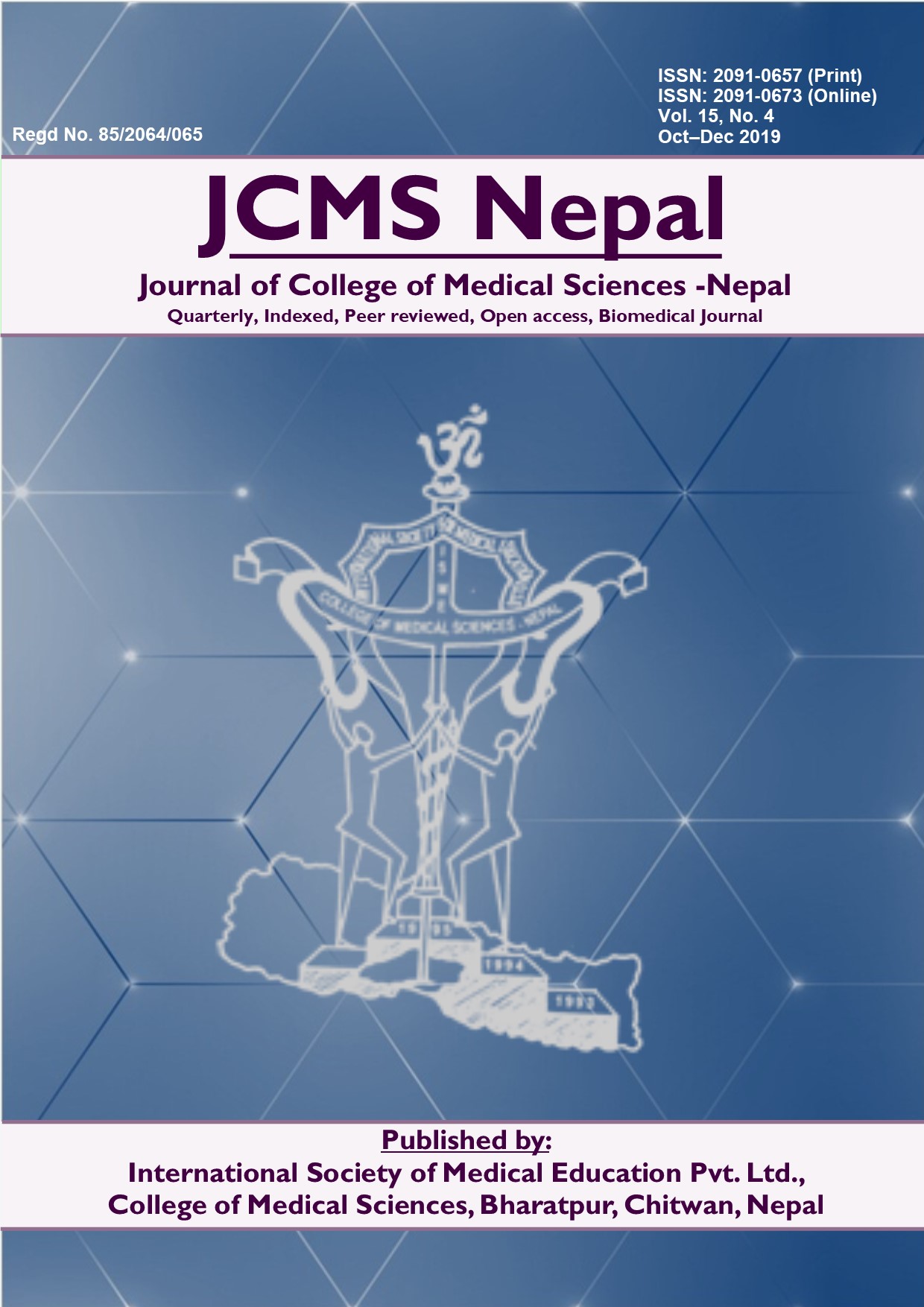Clinical Profile of Diabetic Ketoacidosis among Children in Eastern Nepal
DOI:
https://doi.org/10.3126/jcmsn.v15i4.21985Keywords:
awareness; diabetic ketoacidosis; insulin; Type 1 diabetes mellitusAbstract
Background: Diabetic ketoacidosis (DKA) is a life threatening complication which is the most common reason for hospital admission in children with Type 1 Diabetes. This study was carried out to determine the clinical characteristics of children admitted with Diabetic Ketoacidosis.
Methods: Descriptive retrospective study was conducted at B.P. Koirala Institute of Health Sciences (BPKIHS), Dharan, Nepal. A total of 25 children of less than 20 years old diagnosed with Diabetic ketoacidosis who were admitted to the pediatric ward and pediatric intensive care unit from January 2013 to December 2017 were included in the study. Data were collected via hospital records of patients.
Results: The mean age at presentation was 10.5 ± 4.5 years. Sixteen (64%) children were newly diagnosed as diabetes while, nine (36%) children were known cases of diabetes. The most common precipitating factor for DKA was omission of insulin 6 (24%). Twelve (48%) children had presented with severe DKA. Polyuria 23 (92%) was the commonest symptom followed by polydipsia 22 (88%), weight loss 17 (68%), abdominal pain 13 (52%), vomiting 13 (52%) and unconsciousness 8 (32%). The mean duration of symptoms before presentation was 11.3 ± 5.7 days. Mean HbA1c at presentation was 10.4 ± 2.2.
Conclusion: Majority of the patients was newly diagnosed as diabetes who presented with Diabetic ketoacidosis. Omission of insulin was the main precipitating factor. Polyuria was the most common presenting symptom. Proper follow up care of diabetes and community awareness programs should be emphasized to reduce the incidence of Diabetic ketoacidosis.
Downloads
Downloads
Published
How to Cite
Issue
Section
License
This license enables reusers to copy and distribute the material in any medium or format in unadapted form only, for noncommercial purposes only, and only so long as attribution is given to the creator.




